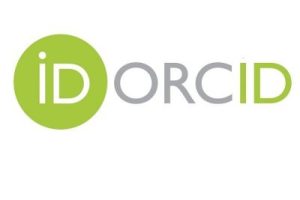РОЛЬ ІНФОРМАЦІЙНО-КОМУНІКАЦІЙНИХ ТЕХНОЛОГІЙ У МОТИВУВАННІ СТУДЕНТІВ СТАРШИХ КУРСІВ ДО НАВЧАННЯ У ДЕРЖАВНИХ УНІВЕРСИТЕТАХ МІСТА РАВАЛПІНДІ
DOI:
https://doi.org/10.14308/ite000670Ключові слова:
ІКТ, мотивація, мотиваційні особливості ІКТАнотація
Протягом останніх декількох років інформаційні та комунікаційні технології стали постійно використовуватися в освіті, особливо в школах, коледжах та університетах. В епоху глобалізації технологія впливає практично на всі аспекти життя. Метою нашого дослідження є вивчення ролі інформаційно-комунікаційних технологій (ІКТ) у мотивації студентів університету. Основними завданнями дослідження були оцінка мотиваційних особливостей інформаційних та комунікаційних технологій, сприйманих студентами. Незалежною змінною дослідження були ІКТ, а залежною змінною ─ мотивація студентів. Для збору даних у дослідженні була використана анкета. Тип дослідження ─ оглядове описове дослідження. Обсяг вибірки в 340 студентів бакалаврів був обраний за допомогою простої випадкової вибірки. Значення описових статистик, стандартне відхилення, частота і відсоток були використані в дослідженні. Для статистичного аналізу даних за допомогою SPSS було використано квадратний критерій для статистичної статистики. Результати дослідження показують, що ІКТ впливає на мотивацію студентів та покращує їхнє навчання; збереження знань та розуміння. ІКТ може вирішити проблеми студентів та мотивувати їх.
Завантаження
Показники метрики:
Посилання
1. Baş, G. (2012). Reading attitudes of high school students: an analysis from different variables. International Journal on New Trends in Education and Their implications, 3(2),47-58.
2. Becker, H. (2000). Pedagogical motivations for pupil computer use that lead to student engagement. Educational Technology, 40 (5), pp.5-17.
3. Christensson, P. (2010, January 4). ICT Definition. Retrieved from http://techterms.com.
4. Crook, C. (2011). Versions of computer supported collaborating in higher education. Learning across sites: New tools, infrastructures and practices, 156-171.
5. Heemskerk, I., Volman, M., Admiraal, W., & ten Dam, G. (2012). Inclusiveness of ICT in secondary education: students’ appreciation of ICT tools. International Journal of Inclusive Education, 16(2), 155-170.
6. Jung, I. (2005). ICT-Pedagogy Integration in Teacher Training: Application Cases Worldwide. Educational Technology & Society, 8 (2), 94-101.
7. Kirkwood, A. (2014). Teaching and learning with technology in higher education: blended and distance education needs ‘joined-up thinking’rather than technological determinism. Open Learning: The Journal of Open, Distance and e-Learning, 29(3), 206-221.
8. Kok, A. (2007). ICT Integration into Classrooms: Unpublished literature review.
9. Kukkonen, J. E., Kärkkäinen, S., Dillon,P., &Keinonen, T. (2013). The effects of scaffolded simulation-based inquiry learning on fifth-Graders' representations of the Greenhouse effect. International Journal of Science Education. Retrieved SEP. 10, 2012,from http://dx.doi.org/10.1080/09500693.2013.782452
10. Miller, M. (2009). What the Science of Cognition Tells Us About Instructional Technology. Change, 41(2), 16-17. Retrieved from Research Library.
11. OECS. (2002). Information and Communication Technology (ICT) Learning Outcomes in Mathematics and Language Arts for Lower Secondary School Students in the Eastern Caribbean. OECS Education Reform Unit. Retrieved from http://www.oecs.org/oeru/ documents/ICT%20Learning%20Outcomes%20Final.pdf
12. Oyzon, M. V. L. & Olmos, O. L. (2010). Students’ notes and their relation to comprehension and recall of lecture information. Retrieved from http://journals.upd.edu.ph/index.php/ali/ article/view/1752.
13. Porter, D., Weaver, A. J., & Raptis, H. (2012). Assessing students' learning about fundamental concepts of climate change under two different conditions. Environmental Education Research, 18(5), 665-686
14. Şahbaz, N. K. (2012). Evaluation of reading attitudes of 8th grade students in.primary education according to various variables. Educational Research and Reviews, 7(26), 571- 576.
15. Sanacore, J. (2008). Turning reluctant learners into inspired learners. The Clearing House: A Journal of Educational Strategies, Issues and Ideas, 82(1), 40-44.
16. software and information industry association. 2000. Research report on the effectiveness of technology in schools. Executive summary http://www.siia.net/sharedcontent/store /e-edtech-sum00.pdf.
17. Volman, M. (2005). A variety of roles for a new type of teacherEducational technology and the teaching profession. Teaching and Teacher Education, 21(1), 15-31.
18. Yoloye, E. O. (2015). New technologies for teaching and learning: Challenges for higher learning institutions in developing countries. Information communication technology (ICT) integration to educational curricula: A new direction for Africa, 250.
</uk>
<en>
1. Baş, G. (2012). Reading attitudes of high school students: an analysis from different variables. International Journal on New Trends in Education and Their implications, 3(2),47-58.
2. Becker, H. (2000). Pedagogical motivations for pupil computer use that lead to student engagement. Educational Technology, 40 (5), pp.5-17.
3. Christensson, P. (2010, January 4). ICT Definition. Retrieved from http://techterms.com.
4. Crook, C. (2011). Versions of computer supported collaborating in higher education. Learning across sites: New tools, infrastructures and practices, 156-171.
5. Heemskerk, I., Volman, M., Admiraal, W., & ten Dam, G. (2012). Inclusiveness of ICT in secondary education: students’ appreciation of ICT tools. International Journal of Inclusive Education, 16(2), 155-170.
6. Jung, I. (2005). ICT-Pedagogy Integration in Teacher Training: Application Cases Worldwide. Educational Technology & Society, 8 (2), 94-101.
7. Kirkwood, A. (2014). Teaching and learning with technology in higher education: blended and distance education needs ‘joined-up thinking’rather than technological determinism. Open Learning: The Journal of Open, Distance and e-Learning, 29(3), 206-221.
8. Kok, A. (2007). ICT Integration into Classrooms: Unpublished literature review.
9. Kukkonen, J. E., Kärkkäinen, S., Dillon,P., &Keinonen, T. (2013). The effects of scaffolded simulation-based inquiry learning on fifth-Graders' representations of the Greenhouse effect. International Journal of Science Education. Retrieved SEP. 10, 2012,from http://dx.doi.org/10.1080/09500693.2013.782452
10. Miller, M. (2009). What the Science of Cognition Tells Us About Instructional Technology. Change, 41(2), 16-17. Retrieved from Research Library.
11. OECS. (2002). Information and Communication Technology (ICT) Learning Outcomes in Mathematics and Language Arts for Lower Secondary School Students in the Eastern Caribbean. OECS Education Reform Unit. Retrieved from http://www.oecs.org/oeru/ documents/ICT%20Learning%20Outcomes%20Final.pdf
12. Oyzon, M. V. L. & Olmos, O. L. (2010). Students’ notes and their relation to comprehension and recall of lecture information. Retrieved from http://journals.upd.edu.ph/index.php/ali/ article/view/1752.
13. Porter, D., Weaver, A. J., & Raptis, H. (2012). Assessing students' learning about fundamental concepts of climate change under two different conditions. Environmental Education Research, 18(5), 665-686
14. Şahbaz, N. K. (2012). Evaluation of reading attitudes of 8th grade students in.primary education according to various variables. Educational Research and Reviews, 7(26), 571- 576.
15. Sanacore, J. (2008). Turning reluctant learners into inspired learners. The Clearing House: A Journal of Educational Strategies, Issues and Ideas, 82(1), 40-44.
16. software and information industry association. 2000. Research report on the effectiveness of technology in schools. Executive summary http://www.siia.net/sharedcontent/store /e-edtech-sum00.pdf.
17. Volman, M. (2005). A variety of roles for a new type of teacherEducational technology and the teaching profession. Teaching and Teacher Education, 21(1), 15-31.
18. Yoloye, E. O. (2015). New technologies for teaching and learning: Challenges for higher learning institutions in developing countries. Information communication technology (ICT) integration to educational curricula: A new direction for Africa, 250.
</en>
##submission.downloads##
Опубліковано
Як цитувати
Номер
Розділ
Ліцензія
This work is licensed under a Creative Commons Attribution-NonCommercial-ShareAlike 4.0 International License.






























